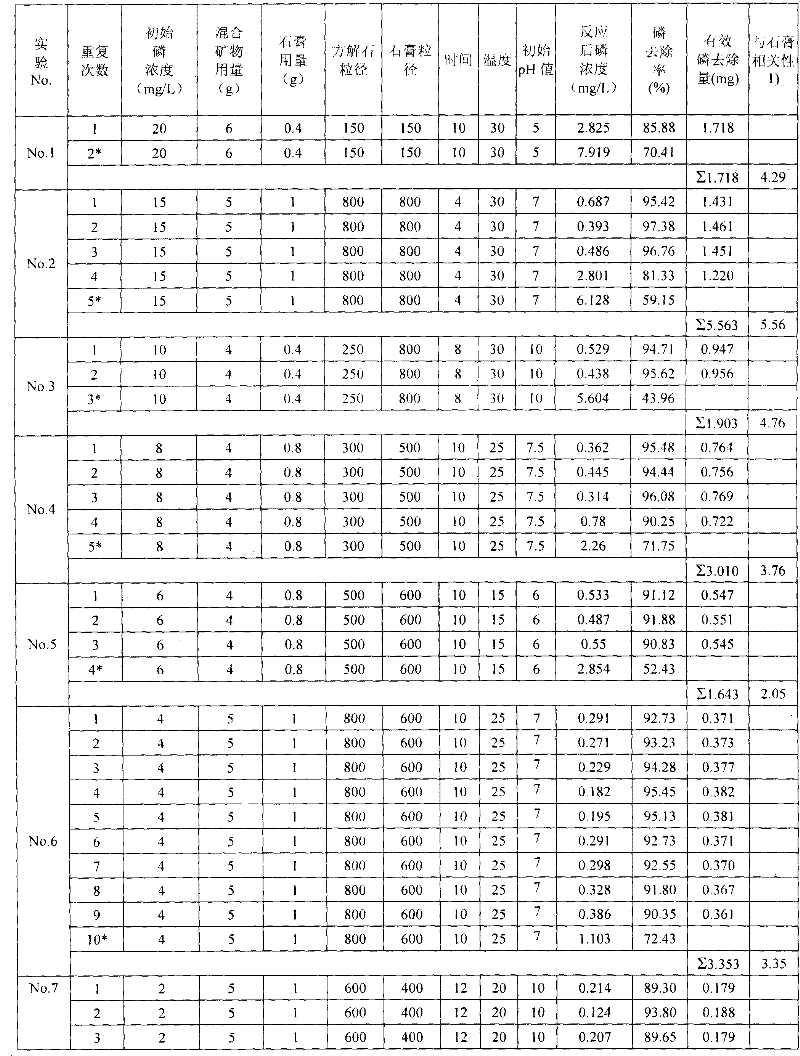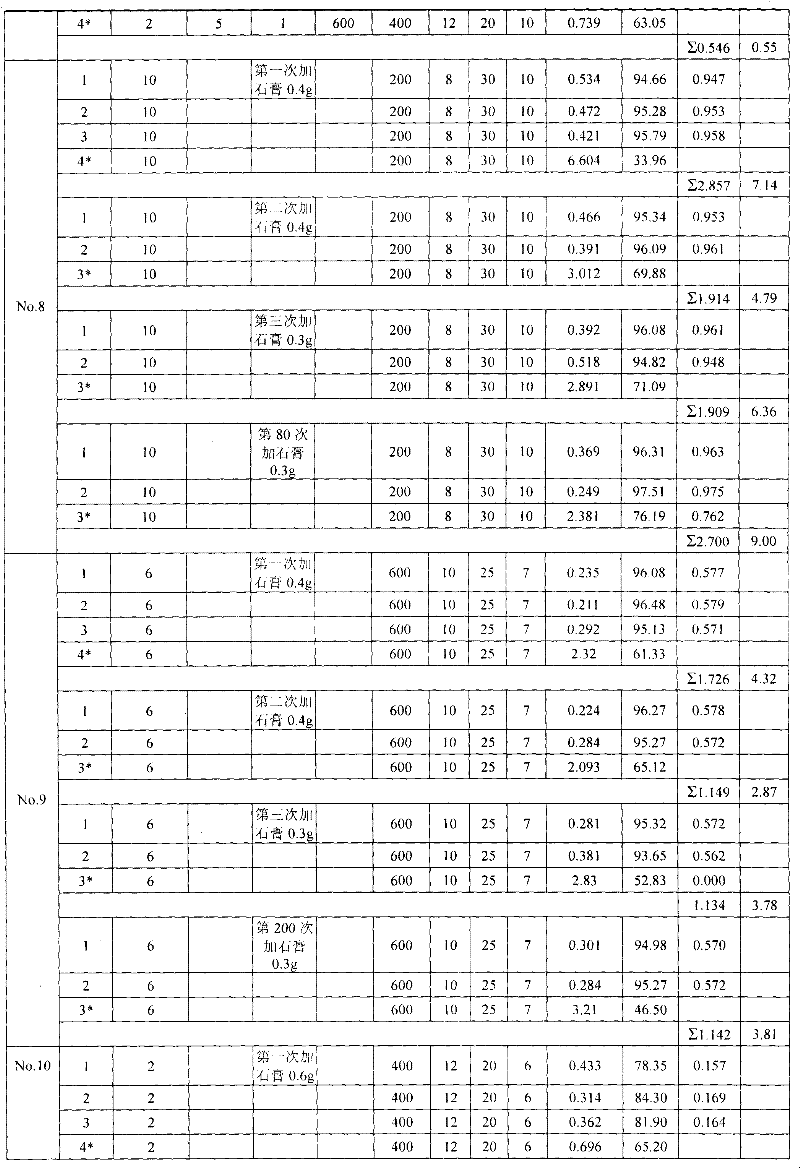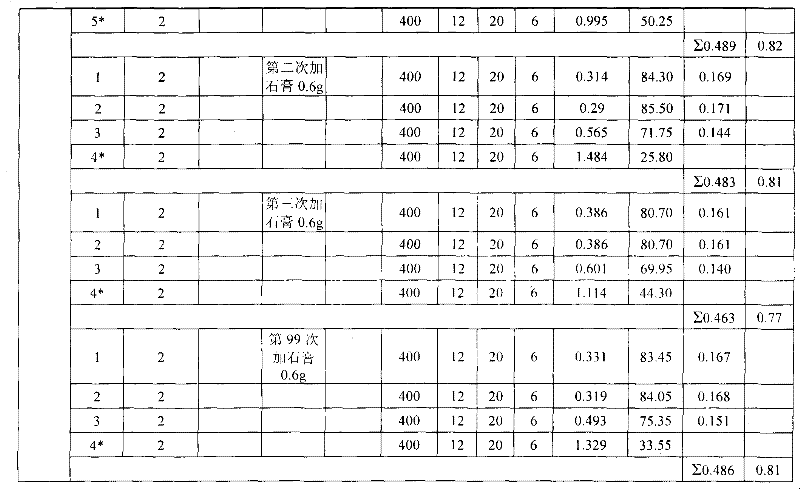Method for removing and recycling phosphorus from phosphorus-rich water bodies or sewage by using natural mineral mixture
A technology of natural minerals and mixtures, applied in the field of water pollution control, can solve the problems of phosphorus removal and recycling, high operating costs, harsh operating conditions, etc., and achieve the effect of water body optimization and convenient use
- Summary
- Abstract
- Description
- Claims
- Application Information
AI Technical Summary
Problems solved by technology
Method used
Image
Examples
Embodiment 1
[0027] Take 6g of mixed mineral powder (the particle size of calcite is 400 mesh, and the particle size of gypsum is 150 mesh) with a ratio of 14:1 (mass ratio of calcite / anhydrite), put it into a conical flask, and add the initial phosphorus concentration of 20mg / L solution, adjust the pH to 5, put it into a constant temperature oscillator, set the rotation speed at 150 rpm, and the temperature at 30°C. After reacting for 10 hours, take the supernatant for testing. Then, remove the supernatant in the Erlenmeyer flask, dry the residual mixed mineral powder in the Erlenmeyer flask, then add 100 mL of a solution with an initial phosphorus concentration of 20 mg / L, and repeat the operation under the above conditions until it removes phosphorus (Recovery of phosphorus) until the effect is low. The final total amount of effective phosphorus removal is 1.718 mg, and the effective phosphorus removal amount corresponding to 1 g of gypsum is 4.29 mg (Table 1, No.1).
Embodiment 2
[0029] Take 5g of mixed mineral powder (the particle size of calcite is 800 mesh, and the particle size of gypsum is 800 mesh) with a ratio of 4:1 (mass ratio of calcite / anhydrite), put it into a conical flask, and add the initial phosphorus concentration of 15mg / L solution, adjust the pH to 7; put it into a constant temperature oscillator, set the rotation speed at 150 rpm, and the temperature at 30°C. After reacting for 4 hours, take the supernatant for testing. Then, remove the supernatant in the Erlenmeyer flask, dry the residual mixed mineral powder in the Erlenmeyer flask, then add 100 mL of a solution with an initial phosphorus concentration of 15 mg / L, and repeat the operation under the above conditions until it removes phosphorus (Recovery of phosphorus) until the effect is low. The final total amount of effective phosphorus removal is 5.563 mg, and the effective phosphorus removal amount corresponding to 1 g of gypsum is 5.56 mg (Table 1, No.2).
Embodiment 3
[0031] Take 4g of mixed mineral powder (the particle size of calcite is 250 mesh, and the particle size of gypsum is 800 mesh) with a ratio of 9:1 (mass ratio of calcite / anhydrite), put it into a conical flask, and add the initial phosphorus concentration of 10mg / L solution, adjust the pH to 10; put it into a constant temperature oscillator, set the rotation speed at 150 rpm, and the temperature at 30°C. After reacting for 8 hours, take the supernatant for testing. Then, remove the supernatant in the Erlenmeyer flask, dry the residual mixed mineral powder in the Erlenmeyer flask, then add 100 mL of a solution with an initial phosphorus concentration of 10 mg / L, and repeat the operation under the above conditions until it removes phosphorus (Recovery of phosphorus) until the effect is low. The final total amount of effective phosphorus removal is 1.903 mg, and the effective phosphorus removal amount corresponding to 1 g of gypsum is 4.76 mg (Table 1, No.3).
PUM
 Login to View More
Login to View More Abstract
Description
Claims
Application Information
 Login to View More
Login to View More - R&D
- Intellectual Property
- Life Sciences
- Materials
- Tech Scout
- Unparalleled Data Quality
- Higher Quality Content
- 60% Fewer Hallucinations
Browse by: Latest US Patents, China's latest patents, Technical Efficacy Thesaurus, Application Domain, Technology Topic, Popular Technical Reports.
© 2025 PatSnap. All rights reserved.Legal|Privacy policy|Modern Slavery Act Transparency Statement|Sitemap|About US| Contact US: help@patsnap.com



